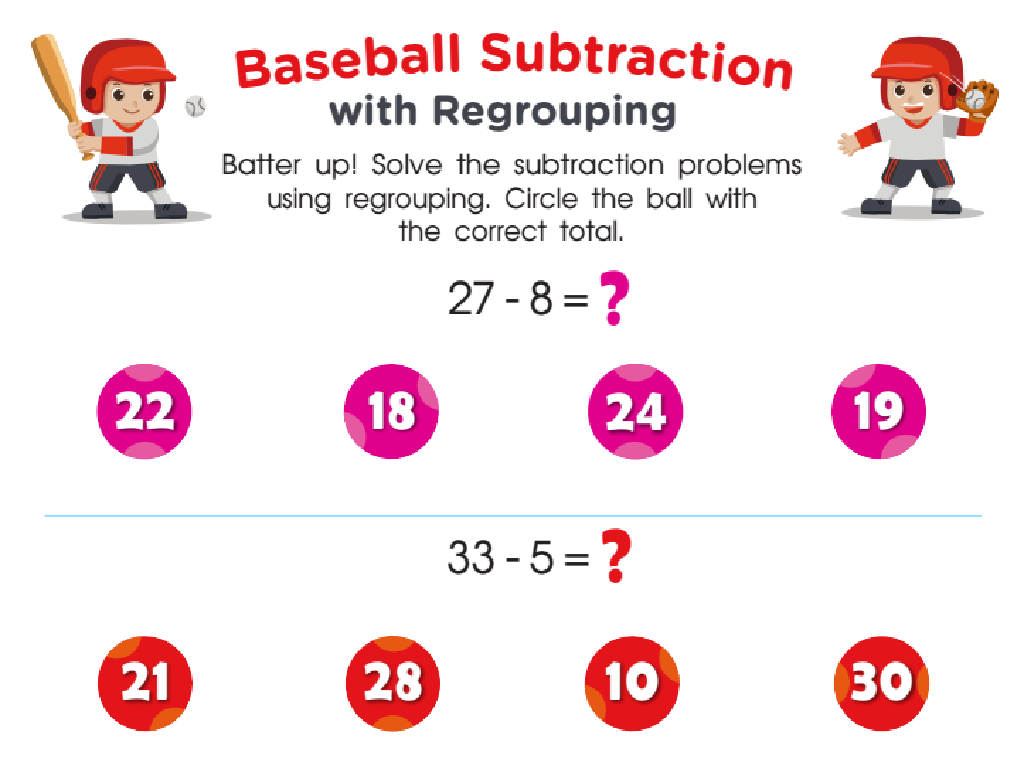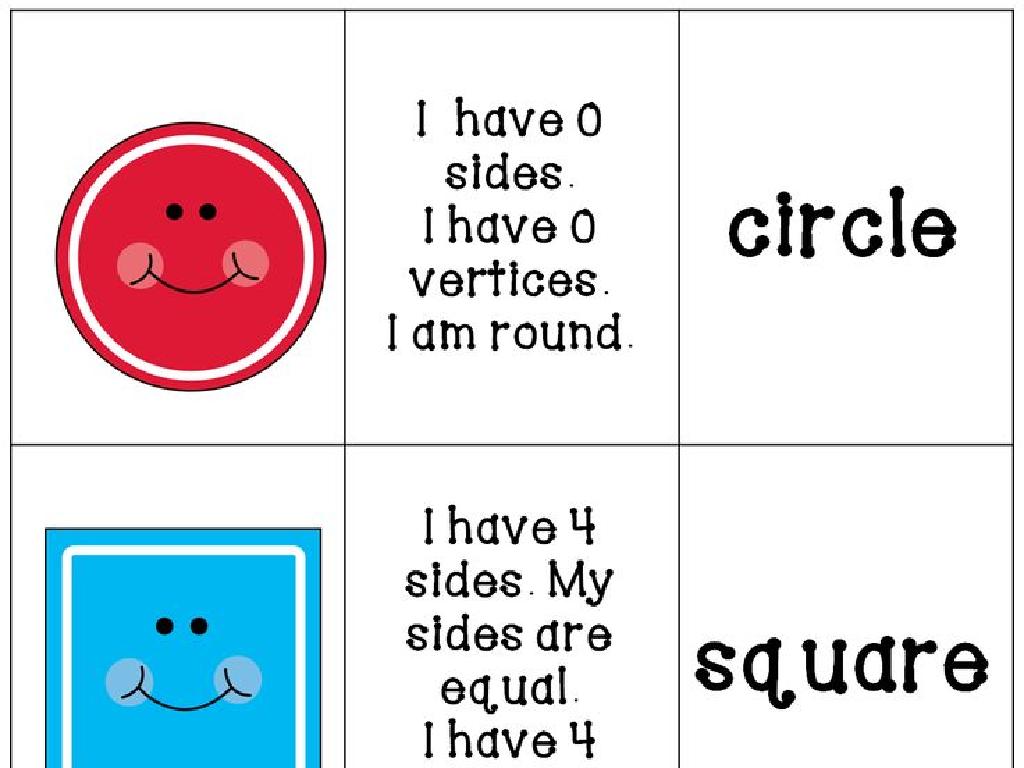Ancient Egyptian Religion
Subject: Social studies
Grade: Sixth grade
Topic: Ancient Egypt And Kush
Please LOG IN to download the presentation. Access is available to registered users only.
View More Content
Exploring Ancient Egyptian Religion
– Ancient Egypt and Kush overview
– Religion’s role in society
– Religion influenced leadership, laws, and daily life
– Deities and beliefs
– Gods like Ra, Osiris, and Isis shaped culture
– Today’s lesson preview
|
This slide introduces students to the rich and complex world of Ancient Egyptian religion, setting the stage for today’s lesson. Begin with a brief overview of Ancient Egypt and Kush, highlighting the geographical and cultural context. Emphasize the centrality of religion in Ancient Egyptian society, affecting everything from governance to daily routines. Introduce key deities such as Ra, the sun god, Osiris, the god of the afterlife, and Isis, the goddess of magic and motherhood, to illustrate the pantheon’s influence on culture and mythology. The preview of today’s lesson should generate excitement and curiosity about the upcoming content, encouraging students to engage with the material actively.
The Pantheon of Egyptian Gods
– Introduction to Egyptian deities
– Ra is the sun god, Isis is the goddess of magic, Osiris is the god of the afterlife, and Anubis is the god of mummification.
– Roles and symbols of the gods
– Ra is depicted with a sun disk, Isis with a throne or wings, Osiris often shown mummified, and Anubis with a jackal head.
– Understanding polytheism
– Polytheism is the belief in many gods, each with specific roles and powers.
– Significance in Egyptian culture
|
This slide introduces students to the rich pantheon of gods and goddesses in Ancient Egyptian religion, emphasizing the diversity and complexity of their deities. Each god had a distinct role and set of symbols, such as Ra with his sun disk symbolizing power and light, and Isis with her throne representing her status as a divine mother figure. Understanding polytheism is crucial for students to grasp how Ancient Egyptians viewed the world and their place in it. The gods were integral to all aspects of life, from the flooding of the Nile to the process of mummification. Encourage students to explore the connections between the deities’ roles and the natural and cultural world of Ancient Egypt.
Ancient Egyptian Religious Practices
– Religion’s role in daily life
– Religion guided daily routines, festivals, and laws.
– Significance of temples and rituals
– Temples were centers for worship and rituals led by priests.
– Mummification and afterlife beliefs
– Mummification was key for afterlife, ensuring spirit’s well-being.
– Impact on society and culture
|
This slide aims to give students an understanding of how deeply religion was woven into the fabric of Ancient Egyptian society. It influenced every aspect of daily life, including work, law, and social conduct. Temples were not just places of worship but also played a significant role in the community, often being the largest and most elaborate buildings. The priests held an important position, conducting rituals and ceremonies. Mummification was a complex process driven by the belief that it was essential for a person’s soul to enter the afterlife. Discuss how these practices reflect the values and beliefs of the Ancient Egyptians and encourage students to compare these with modern religious practices.
Myths and Legends of Ancient Egypt
– Storytelling explained the world
Ancient Egyptians used myths to make sense of natural events and human experiences.
– The legend of Osiris and Isis
A story of love, betrayal, and the quest for justice, showing the importance of loyalty and order.
– Myths shaped culture and religion
Myths were not just stories; they were integral to daily life, rituals, and the Egyptian worldview.
– Understanding ancient beliefs
|
This slide introduces students to the rich tapestry of myths and legends in Ancient Egyptian culture. Storytelling was a crucial part of how Egyptians explained natural phenomena and human conditions. The legend of Osiris and Isis, for example, is a powerful narrative that encapsulates themes of love, betrayal, and the eternal struggle for justice, reflecting the values and beliefs of the time. Myths also played a significant role in shaping the culture and religion of Ancient Egypt, influencing everything from art to governance. Encourage students to think about how stories in their own lives help them understand the world. This will help them relate to the ancient myths and appreciate their significance in a historical context.
The Pharaoh: ‘God-King’ of Ancient Egypt
– Pharaoh’s divine status
– Pharaohs were considered gods on earth, embodying Horus.
– Role in religion and governance
– Pharaohs performed religious rituals and ruled the kingdom.
– Famous Pharaohs
– Tutankhamun, Ramses II, and Cleopatra are notable rulers.
– Their enduring legacies
– Monuments like pyramids and temples commemorate them.
|
The Pharaoh was seen as a ‘God-King,’ a divine figure who was the bridge between the gods and the people. They were responsible for maintaining order and harmony in the kingdom, both through their governance and their religious duties. Pharaohs like Tutankhamun are known for their tombs, Ramses II for his military conquests, and Cleopatra for her political acumen. Their legacies are preserved in the grand structures and stories left behind, which continue to fascinate us. Discuss with students how the belief in the Pharaoh’s divinity shaped Egyptian culture and governance. Encourage them to explore the impact of these rulers on history and how their legacies have survived through the ages.
Temples and Monuments in Ancient Egypt
– Temples: Homes of the gods
– Temples were built as sacred places for gods, like houses.
– Sacred sites and architecture
– Locations were chosen for religious significance; designs often mirrored the journey to the afterlife.
– Monuments in religious rituals
– Monuments played key roles in ceremonies, often depicting pharaohs with deities.
– Symbolism in design
– Design elements symbolized beliefs, like lotus columns representing creation and rebirth.
|
This slide explores the religious architecture of Ancient Egypt, focusing on temples and monuments. Temples were considered the dwelling places of gods and were central to religious life. The choice of location and architectural design of temples was deeply symbolic, often reflecting the Egyptians’ beliefs about the afterlife. Monuments, including obelisks and statues, were integral to religious ceremonies and were used to commemorate pharaohs and gods. Symbolism was embedded in every aspect of design, with common motifs representing key religious concepts. Encourage students to think about how architecture can reflect and reinforce cultural and religious values.
Class Activity: Create Your God
– Imagine your Egyptian god
– Decide their role and symbols
– What would they govern? What objects represent them?
– Assign powers to your god
– What abilities would they have to influence lives?
– Prepare a class presentation
|
This activity encourages creativity and understanding of Egyptian religion by having students design their own deity. Provide them with examples of roles (e.g., god of harvest, knowledge), symbols (e.g., ankh, scepter), and powers (e.g., control over elements, healing). Explain that in Egyptian culture, gods were integral to daily life and had specific domains. Allow students to use art supplies to draw their gods and prepare a short explanation of their god’s significance. Possible activities: 1) Students can write a short story involving their god. 2) They can compare their god with real Egyptian gods. 3) Create a ‘day in the life’ narrative from their god’s perspective. 4) Have students exchange drawings and guess the role and powers based on the symbols used. 5) Students can build a 3D model of their god using craft materials.
Reflecting on Ancient Egyptian Religion
– Recap of Egyptian religion
– Gods, afterlife beliefs, and rituals were central to daily life.
– Religion’s role in identity
– Beliefs unify people, influencing laws, customs, and architecture.
– Learning from ancient beliefs
– Studying past beliefs helps us understand cultural diversity and history.
– Impact on society and culture
|
As we conclude our exploration of Ancient Egyptian religion, it’s important to reflect on how integral these beliefs were to the fabric of their society. Religion was not just a set of rituals; it was a unifying force that shaped every aspect of life, from governance to architecture. By understanding how the Egyptians viewed the world, we gain insights into their values and motivations. This reflection can also help students appreciate the diversity of beliefs in the world and the role religion plays in shaping civilizations. Encourage students to think about what aspects of their own culture are influenced by beliefs and values, drawing parallels to the ancient past.





